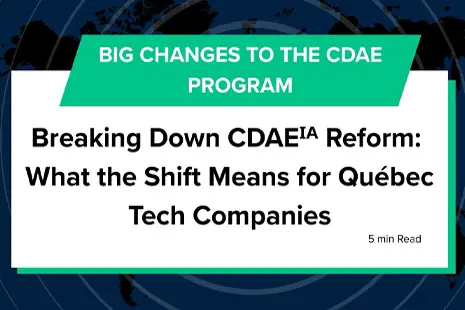While broader efforts to overhaul Canada’s innovation funding programs have taken a backseat, the Department of Finance is plowing ahead with consultations to improve the banner Scientific Research and Experimental Development (SR&ED) tax program.
The program—which serves R&D-focused businesses of all sizes and across industries—provided almost $4 billion in support to over 22,000 innovative Canadian businesses in 2021 alone.
But critics of SR&ED have long voiced concerns that the program is well due for an overhaul. This has become an urgent consideration in light of recent findings that Canada is lagging in both pure productivity and investments into new innovation compared to global peers.
One key component of the 2024 SR&ED consultations is exploring whether Canada should launch its own “patent box regime,” which would incentivize the retention of intellectual property (IP) on Canadian soil.
As the government framework explains, Canadian businesses currently “outlay more to entities in other countries for the use of IP than they receive from international sources for the same purpose.” The consultations will aim to help the Department of Finance better understand how to reverse Canada’s negative balance in this context, while making the country a more attractive home for “developing, commercializing, and retaining ownership of IP.”
Redefining SR&ED from a “cost-neutral” standpoint
Among the big-picture SR&ED consultation considerations are questions around the very definition of SR&ED, and whether qualifying criteria needs to be modified so more innovative businesses can take advantage.
Similarly, the consultations ask directly how the SR&ED program can be better aligned with other government-backed innovation initiatives. Though not named outright in any press materials, this likely includes the IRAP program and other high-profiled innovation grants that have been earmarked for a similar overhaul in 2026 as part of the 2024 Budget Implementation Act.
Underlying all of this is how to overhaul SR&ED without overspending. Specifically, in question 4 of the SR&ED Consultation criteria, they ask “what changes could be made to the SR&ED program to offset the costs of any proposed enhancements?”
While it remains to be seen what a “cost-neutral” approach would look like, some advocates have offered a new approach that would continue to prioritize early-stage funding, then scale back the rate of support as businesses grow. This process—outlined by the Council of Canadian Innovators—is one such method of financing a “patent-box regime,” the group states in a pitch co-sponsored by Mooseworks.
SR&ED remains, throughout consultations
As consultations take off, businesses that take advantage of SR&ED today shouldn’t be concerned about their access to funding drying up.
Boast customers that qualify for SR&ED can actually make their R&D dollars go further, tapping into a portion of their SR&ED claim over the course of the year—not just when the books close every 12 months.
By syncing key financial, workflow and payroll data into the Boast platform, our team can actively track for SR&ED-eligible activities and map your EOY tax credit claim as your team conducts R&D. With our QuickFund program, customers can tap into a portion of their anticipated SR&ED credits on a quarterly basis, giving them capital to reinvest into their product roadmap, and potentially even unlocking more SR&ED-eligible activities (and therefore cash back) in the process.
Learn more about how you can pre-qualify to tap into your advanced SR&ED refund by working with Boast to maximize your claims.


